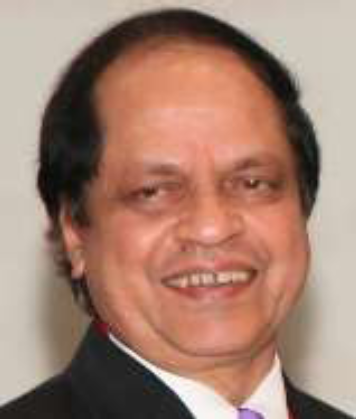 | Talk #2
Colloquium # 305
Gravitational collapse of dust in molecular clouds:
Approach based on thermodynamics and Virial theorem
By Prof Avinash Khare
Sikkim Central University
Friday, Sep 17 2021 at 3:30 PM
|

Abstract
Molecular clouds (MC) are large aggregates of Hydrogen gas and dust ranging in size from 0.01 to 50 pc. The dust in these aggregates typically is silicates and/or PAH, dispersed inhomogeneously within the cloud. Due to a number of factors, the dust grains in the MC could acquire a finite charge. Thus the dust grains interact via Gravito-Yukawa (GY) potential; gravitational interaction due to mass and screened Coulomb or Yukawa potential due to finite dust charge in the ionized gas. In this talk, we study the dynamics of particles which interactvia the GY potential. Our results show that an ensemble of such particles exists in two states. At high temperature Td , the dust is dispersed in a low density diffused state while for temperatures less than a critical value Tdc , the dust collapses in a small dense core. Within the dust core there is a strong electric field which leads to an accumulation of ionised Hydrogen gas within the dust core. The critical temperature Tdc is found to be proportional to ndcore the dust density in the dense core. This result is obtained in three different ways; using mean field arguments (consistent with the thermodynamic limit) based on Helmholtz energy, law of corresponding states which show that the collapse to dense core to be a first order phase transition and using the Virial theorem which shows the transition to dense core to be a bifurcation. The predictions of the theory e.g., Tdc α ndcore , collapse to dense core for Td < Tdc,latent heat of transition, existence of critical point, stability and oscillations of the dense core and the existence of electric field in the core etc. are verified in MD simulations. These results suggest that collapse of dust to dense core as the possible mechanism of formation of gas cores observed in molecular clouds.
About the speaker
Prof Avinash Khare did PhD from PRL in 1984 in the field of Mirror Machines. Subsequently he joined PPP and later IPR where he remained until 2000. Since 2005 he is in the department of Physics and Astrophysics, University of Delhi. Currently he is the Vice Chancellor of Sikkim Central University, Gangtok, Sikkim. In between he was at JET ad Culham Lab 1986- 1989, University of California 1995, Univesity of Iowa 2001-2003, Univ. of Columbia 2004-2005 and a research professor at University of Alabama at Huntsville since 2010. Professor Khare’s major contributions include a theory of ideal internal kink in tokamak which he proposed with J. B. Taylor, Steven Cowley and Jim Hastie. In field of dusty plasmas he has proposed a theory of critical point and phase coexistence and predicted the existence of electrostatic pressure which has been verified experimentally. In non neutral plasma he did early work on toroidal equilibrium and confinement. In space physics he has predicted the existence of compact dust objects. Along with Russian mathematician Academician V. L. Rvachev he has proposed Non Archimedean algebra, which is the mathematics of numbers without infinity and applied it to cosmology, gravitation and computers. He has also proposed and patented dust plasma thruster which is novel space propulsion techniques and a new type of heat pump and engine which works using electric fields.
Prof Khare served as vice president (2000-02) and president (2010-12) of PSSI. He is a fellow of all three major academies i.e., Indian National Science Academy Delhi. National Academy of Sciences (India), Allahabad and Indian Academy of Sciences, Bengaluru. He is also a recipient of Homi Bhabha Fellowship Award (1993-95). He has recently been awarded Biren Roy Memorial medal of Indian National Science Academy.

